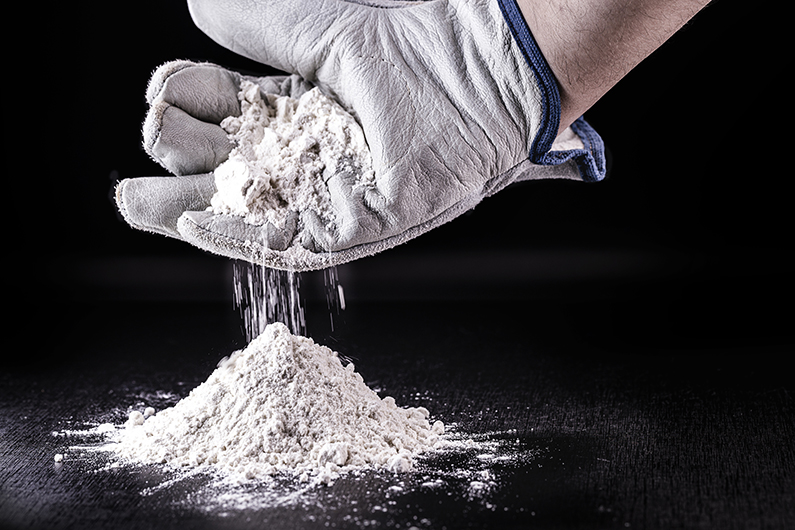More news
- Asian paint regulatory round up – Indonesian exterior paint still uses lead, warns W...
- Nigeria’s paint industry navigates regulatory changes and economic challenges amid p...
- Focus on the global coatings market: Global coatings market outlook
- Innovative coatings mitigate effects of deepening climate change
- View from the UK: Navigating chemical policy and sustainability

Michael Ober, Global Product Sustainability and Regulatory Affairs Manager at the Chemours Company and Steven De Backer, EMEA Technical Marketing Manager at The Chemours Company, discuss how in light of increasing consumer concern for sustainability and impending regulations regarding the use of certain chemicals, innovative TiO2 product design is enabling coatings producers to better anticipate and address these evolving expectations
Consumers today are demanding more details about the safety and sustainability of the products used in their homes than ever before. As a result, new regulations and requirements for ecolabel compliance are emerging, with the goal of providing customers with information that empowers them to make smarter purchasing decisions.
In this vein, European regulators have announced plans to classify Trimethylolpropane (TMP), a common surface treatment for TiO2, as a reproductive toxicant. This action could have possible ecolabel implications in the future. TMP is nearly ubiquitous in the TiO2 industry and is used to treat more than 50% of commercially available pigmentary TiO2 today. In the coatings industry, it is estimated that as much as 90% of available TiO2 is treated with TMP.
While regulators are still in the process of making their final determination, it is widely expected that coatings producers will face further pressure to remove TMP from formulations for all products sold in the European Union (EU) within the next few years. TMP and chemicals similar to TMP, such as Trimethylolethane (TME), may also have further toxicological or regulatory hurdles to overcome in other jurisdictions, providing a global impetus for the removal of TMP from formulations.
Aside from meeting all regulatory requirements, consumers today are also seeking products that increase societal, economic and environmental value on our shared planet. They want to know the products they are purchasing are being produced in more sustainable ways, either by using less energy, producing less waste, or utilising freshwater more efficiently.
Meeting new demands from regulators and ecolabels to remove TMP from product formulations and consumers’ desire for more sustainable products will require an innovative approach to TiO2 product design. At Chemours, the answer is the introduction of Ti-Pure™ TS-6700, a high-performance, TMP- and TME-free TiO2 grade designed for waterborne architectural coatings applications.
In addition to creating a product without the use of TMP and TME, our goal in designing Ti-PureTM TS-6700 was to make an excellent opacity, high gloss and highly durable grade in a sustainable way to meet our own, as well as our customers’, sustainability goals. Additionally, we wanted to create this grade to be easy to drop-in and use. Through a series of tests in a laboratory setting, we’ve found the following benefits:
- Meets current and anticipated regulatory and ecolabel requirements: While regulators are still in the process of making their final determination on how TMP will be classified, Ti-PureTM TS-6700 is fully expected to meet all new requirements. Taking a proactive approach to meeting potential future regulations gives coatings producers time to make any adjustments and peace of mind knowing that their new formulations will meet regulatory standards as it pertains to TMP and chemicals similar to TMP for the foreseeable future. Ti-Pure™ TS-6700 goes beyond simply removing TMP and avoids the use of similar chemicals as well, meeting any current and anticipated regulatory changes. Instead, it is produced with a renewable and bio-based surface treatment. Getting started early will allow coatings producers to get ahead of any changes and avoid potentially costly last-minute reformulations.
- Made with 100% renewable electricity: To support our mission to become the most sustainable TiO2 enterprise in the world and meet consumer desire for more sustainably made products, Ti-PureTM TS-6700 is produced with 100% renewable electricity, allowing for a reduction of CO2 emissions.
- A near drop-in replacement: Reformulating products can be costly and time consuming for coatings producers. For this reason, Ti-PureTM TS-6700 was designed as a near drop-in replacement for blue undertone universal grades in architectural applications to limit any potential disruption that comes with reformulating products. Ti-PureTM TS-6700 boasts very similar final paint properties. It provides the outstanding durability, fast wet-in times, high gloss and great hiding power that coatings producers have come to expect. It also has excellent dispersibility, allowing for faster wet-in and processing and the potential to reduce costs through reduced dispersant demand. As a result, very little reformulation is required to produce coatings with the high levels of performance consumers desire.
- Additional sustainability, performance and cost benefits: Ti-PureTM TS-6700 has the potential to reduce energy usage during coatings production with some light reformulation. At lab scale, this grade was shown to lead to reduced dispersant demand, faster wet-in time, and a reduction in grind energy. This greater ease of dispersion means that less energy is required for the dispersion process, leading to lower overall production costs. As a result, coatings formulators can achieve additional sustainability and cost benefits by reducing their product’s overall carbon footprint during paint manufacturing.
Ti-Pure™ TS-6700 was developed with coatings producers and their evolving needs in mind, to provide a proactive solution to regulatory demands and advance sustainable product design. At Chemours, we believe innovation that will move our industry forward must first and foremost centre around the coatings producer. Only by deeply understanding their products, production processes, industry regulations and ultimate goals can innovations be achieved that advance the state of coatings products. By working together with our customers and regulators, we can make progress in improving sustainable product design and creating a brighter future for our shared planet.



